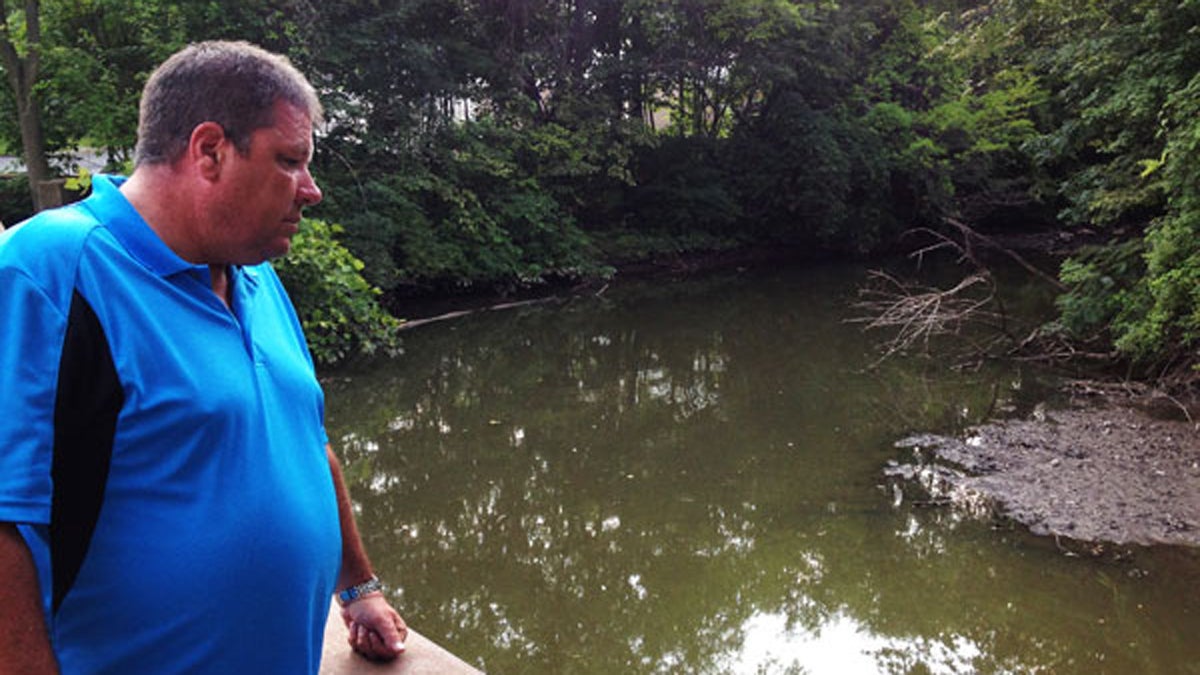Problems with repetitive flooding mean recurring losses for inland N.J.
Listen
Hillsdale Fire Department Captain Tom Kelley looks out on Pascack Brook
While Sandy’s devastation brought renewed attention to longstanding concerns about sea-level rise and vulnerabilities along the coast, much of the recurrent flooding in the state has historically occurred inland straining the resources of municipalities that in some cases are located nowhere near the beaches and the boardwalks of the Jersey Shore.
As fire department captain Tom Kelley gives a tour of his quiet, suburban neighborhood, it’s hard to reconcile the place he describes with the neatly manicured lawns and shade-dappled streets you see in front of you.
“This house has been flooded maybe a dozen times,” he says, pointing out his car window. “The water flows down this street, and it flows right into the house. So every time they renovate it, they finish it, someone moves in, and it floods.”
Another home he points to belonged to an older woman who moved out after Hurricane Irene and never came back. “She couldn’t deal with it anymore,” he says. Then Kelley drives past his own home, which was destroyed during Hurricane Floyd in 1999, when six feet of water flooded his block.
“We were coming through here on boats, and we could barely see the top of that street sign. That’s how high it was,” he recalls. He later rebuilt the house, elevating it 11 feet off the ground — far beyond insurance requirements and so high that he had to get a variance to allow him to exceed town height restrictions.
For Kelley and his neighbors in the small Bergen County town of Hillsdale — situated along the banks of the Pascack Brook — flooding has become more and more common over the past few years. But unlike others grappling with this situation, the talk here doesn’t revolve around dunes, sea walls, or storm surge.
While Sandy’s devastation brought renewed attention to longstanding concerns about sea-level rise and vulnerabilities along the coast, much of the recurrent flooding in the state has historically occurred inland straining the resources of municipalities that in some cases are located nowhere near the beaches and the boardwalks of the Jersey Shore. This is due to a variety of factors, including overdevelopment in sensitive areas, erosion of wetlands and open space that would provide natural buffers for stormwater runoff, and the increasing frequency of heavy rainfall and severe storms.
Since most homeowners living in these areas are insured through the National Flood Insurance Program, this ends up costing taxpayers, who until now have been forced to subsidize residents to repair houses that continually flood. According to claims data supplied by FEMA, one condominium building in Kearny, for example, has filed 30 separate claims over the past 36 years totaling more than $5.3 million in pay-outs. Another, single-family home in River Vale is listed as having filed 16 flood insurance claims, adding up to $1.3 million, while a home in Pompton Lakes has flooded 20 times over the years.
NJ Spotlight, an independent online news service on issues critical to New Jersey, makes its in-depth reporting available to NewsWorks. Click through to NJ Spotlight for more from Scott Gurian.
WHYY is your source for fact-based, in-depth journalism and information. As a nonprofit organization, we rely on financial support from readers like you. Please give today.

